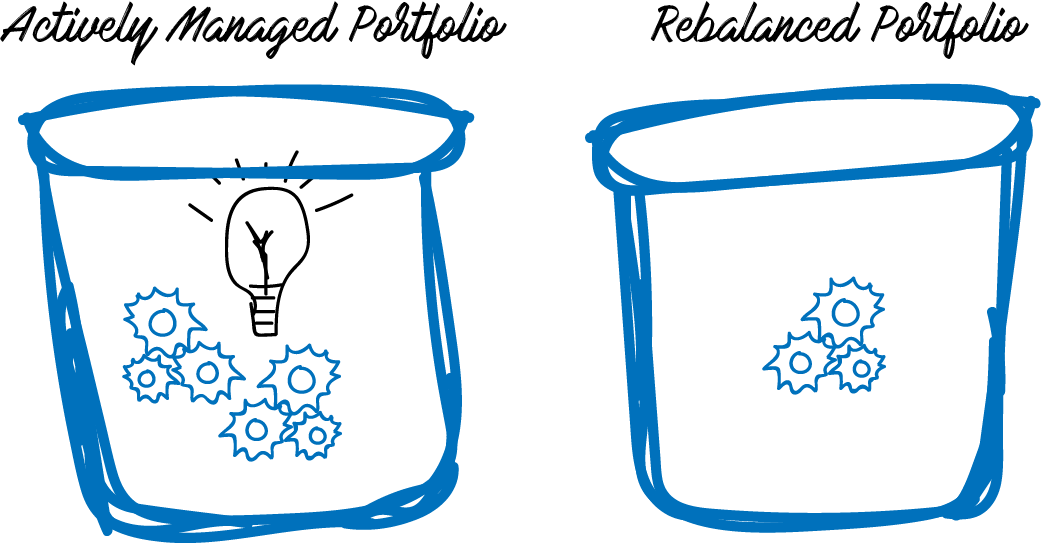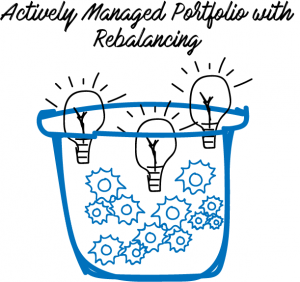The buzz of robo advisors has been around for some time now, but what exactly is a robo advisor and why would an investor use one? A robo advisor is a technology that takes the place of a human advisor. If you were to invest with a typical financial advisor your process would (for the most part) look like the following:
- Schedule an appointment to meet with an advisor
- Meet with an advisor at their offices or on the phone
- Discuss your financial goals and express your tolerance for risk
- The financial advisor will propose a plan or portfolio allocation based on that discussion
The time table for that process could take some time. Especially between coordinating schedules. A robo advisor uses technology to facilitate the process above based on your convenience. A robo advisor is a digital platform (on the internet) that provides automation (taking a long process and making it highly automatic through technology) and sometimes algorithm-driven financial services. Technology envelops the process of investing!
Since 2008, there are mainly two different types of robo advisors that have emerged:
(1) Stand-Alone Robo
(2) Hybrid Robo
A stand-alone robo is one that does not use any human interaction at all. An example of a standalone robo is Betterment, or Wealthfront. A hybrid robo is a robo advisor that uses technology but also has human interaction and human involvement in parts of the process. AssetMaxxGO℠ is a hybrid robo advisor. You can also separate robos into different categories based on the underlying investment vehicles (mutual funds, ETFs, stocks, etc.) found in the proposed portfolios or the overall investment styles like either active or passive.
So, what are the Pros and Cons of Robo Advisors?
Pros
- On your own schedule
- Better accessibility
- Low cost alternative
- Low account minimums
- Efficiency
Cons
- Limited human interaction
- Lack of active management
- Possibility of frequent rebalancing
- Unproven during a down market
In addition to our traditional investment services Spectrum Financial wanted to provide a robo advisor that combatted some of the cons of the other robo advisor offerings while embracing its pros. At Spectrum we define our robo as a hybrid automated investment platform. Hybrid meaning, if you want to talk to us about your portfolio, pick up the phone and we would be happy to talk with you!
One of the reasons Spectrum launched a robo advisor is because of the need in the market place for actively managed portfolios (and mutual funds) in robo technology space. The funds available in AssetMaxxGO℠ are all actively managed. Although the technology found in robo advisors has existed since the early 2000’s for advisors, the technology wasn’t available for individual investors until Betterment came along as the first official robo advisor in 2008. Using Betterment as an example, their algorithmic based portfolio allocations were made up of low cost, target date funds or ETFs meant to reflect the fundamentals of a buy and hold portfolio. Many robos today use buy and hold investment vehicles for the portfolio allocations, which will not protect investments during drawdowns and bear markets, like we saw in 2008 and 2011.
At Spectrum our purpose is to lower risk and manage it to the best of our ability and we do that through active management. The CEO of Spectrum Financial and the portfolio manager for both the Spectrum Funds and the Hundredfold Funds, Ralph Doudera, actively manages the funds daily which means daily active management and daily risk management in your portfolio. Understanding the investments in your portfolio and who is managing them are important- especially when it comes to automated robo advisors. For some investors, a face-to-face hands-on approach is best but for others this new and exciting technology paired with AssetMaxxGO℠’s use of active management, may be a perfect fit.



